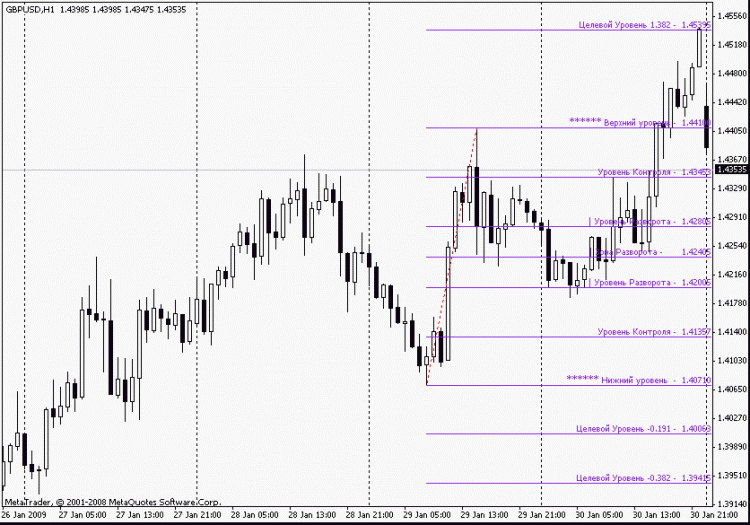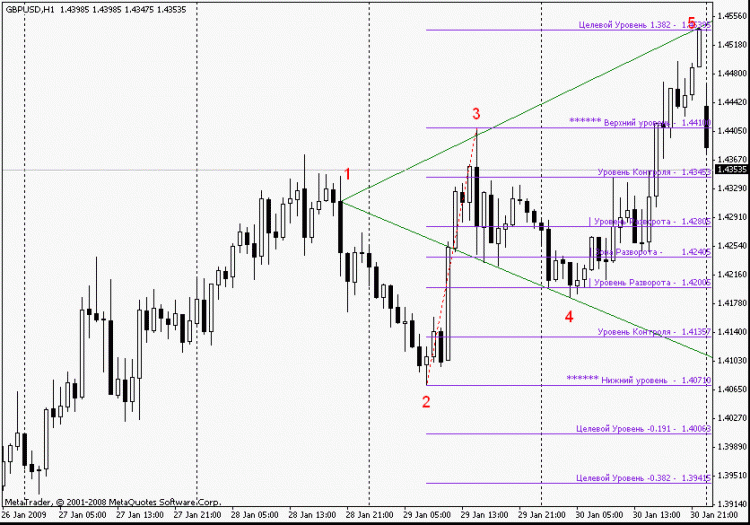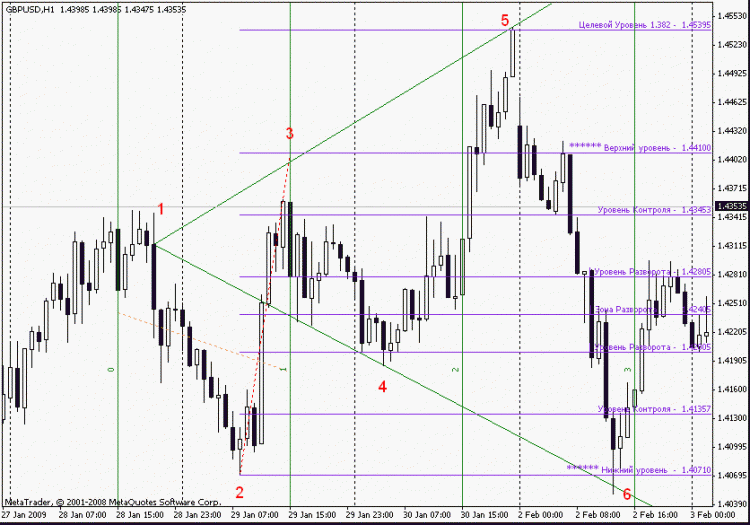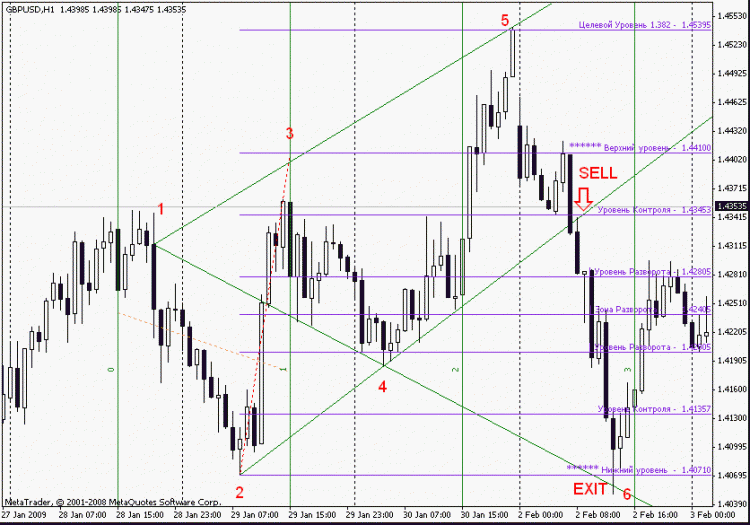
Channels. Advanced Models. Wolfe Waves
Introduction
Channels are vivid examples of defining points of trade position opening and closing, allow conducting the estimation of the current situation for the trade decision making. Basic rules of decision making about trading in a channel inform well about price movements within a channel, but the absence of defined or formalized ruled prohibit detecting break out points, and this often catches traders unawares. For the identification of such places M and W models or Merill patterns, Gartley butterflies, Pesavento models and Wolfe waves are used.
Wolfe Waves. Defining and Marking Rules
Notwithstanding the uniqueness of the market, for the whole history of its existence there were empirically gathered repeating combinations of price, volume and indicators that are now called patterns. The analysis of patterns is based on one of axioms of the analysis of technical parameters of prices - "History repeats itself". Patterns are also called figures or templates.
There are several types of patterns:
- undefined patterns;
- continuation patterns;
- reversal patterns.
Channel models of Wolfe Waves belong to the latter type.
The author of this method explains on his website that the Wolfe Wave is made of supply and demand that form their own equilibrium. Such models are not unique. They can be met on any markets and in all timeframes. Investigations of the author of this model allow another understanding of Elliott waves or Merill model. Particularly, example of such waves in a downward channel is the combination of Elliott's five-wave structure 1-2-3-4-5, where the point one is the beginning of the correction wave 2, or W14 of Merill model. This is an example for an up-trend. And the example of a down-trend is Merill's M3 model or the point four as the beginning in Elliott waves (4-5-а-b-c). However the most correct formations are figures that appear at corrections of waves. There they can be absolutely correct and show the point of the channel break out, which is the correction.
The most precious feature of Wolfe Wave formation is that the range of movement can be predicted with the amazing accuracy.
In my article "Idleness is the Stimulus to Progress. Semiautomatic Marking a Template" I already included rules of marking the pattern for trading by Wolfe Waves.
Let's consider step-by-step an example of the generation of the indicated formation that was formed at the end of 2009.
On the first stage of marking we should place fibo levels between points 2 and 3. Thus we project the future development of the price movement. The back movement that starts from point 3 ends between 38 and 61 percent of the price movement of points 2 and 3. This is the ideal correlation. Thus we get point 4 on the chart and wait for the formation of wave 5. Here we should take into account that wave 5 can be 138 or 161 percent of the wave 2-3. In this case we have exactly 138,2%
After defining key points on our pattern, let's number the found waves and draw trend lines for projecting the target zone of our pattern. The important moment in marking any pattern is the correct detection of point 1. This point is not always on the top of a zigzag break. This point can be located between points 1 and 2. In order to project it, we should join points 5 and 3 by a trend line and then the wanted point will be found in the point of intersection of the line between points 1-2; from this point let's draw a ray through the point 4 for projecting the target zone of point 6.
To complete our work let's draw temporary fibo zones to define the completion time of price movement. Take into account that time zones have a certain inaccuracy connected with the fact that there are holiday omissions on the chart. However there is a reference, though quite a relative one.
A confident market entering can be performed after candles break out the trend line that joins points 2 and 4. The channel formed by trend lines 1-3-5 and 2-4 is mostly narrowing or parallel. The important feature noted by the author of the system is the symmetry. The most precise models are obtained when time intervals between points 1-3-5 are equal.
Nevertheless, the above formations work even if symmetry is not strictly observed. Sometimes price does not reach the projected level by several points or crosses it and moves further. There were cases when price moved much further, and the corresponding formation of waves was detected on higher timeframes. That was overlapping, which made the movement in one direction even stronger. Obviously, this is the so called market fractality.
Conclusion
Please note that Wolfe Wave patterns as models of channel break-out, like most trading strategies, are very subjective. It is important to use these models only after gathering experience and necessary skills on history and demo account. And, of course, stop orders should not be forgotten.
Translated from Russian by MetaQuotes Ltd.
Original article: https://www.mql5.com/ru/articles/1564
 Alert and Comment for External Indicators
Alert and Comment for External Indicators
 Effective Averaging Algorithms with Minimal Lag: Use in Indicators and Expert Advisors
Effective Averaging Algorithms with Minimal Lag: Use in Indicators and Expert Advisors
 Using Neural Networks In MetaTrader
Using Neural Networks In MetaTrader
- Free trading apps
- Over 8,000 signals for copying
- Economic news for exploring financial markets
You agree to website policy and terms of use




